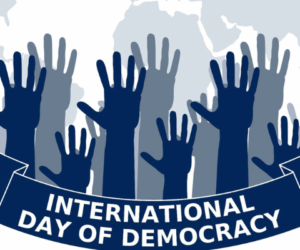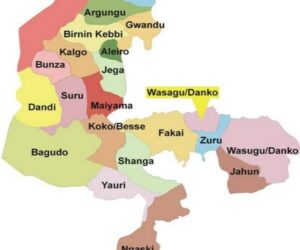
While…short-term measures may bring temporary relief or political applause, they ultimately weaken the economy, discourage investment, and erode long-term competitiveness. True reform requires a shift in mindset, away from politically expedient measures and toward structural transformation. This means aligning sectoral policies, incentivising investment in critical industries, building resilient institutions, and prioritising systemic reforms over quick fixes.
Nigeria’s economic management has long been characterised by short-term interventions designed to provide immediate relief, often at the expense of long-term stability. Successive governments, most often persuaded by the lure of political credits and quick wins, have leaned heavily on palliatives – policies that soothe the surface pain – rather than curative measures that address underlying structural deficiencies. While many of these actions are well-intentioned, they frequently distort market signals, erode investor confidence, and compromise the resilience of the business environment. In the process of implementing these palliatives, cross-sectoral alignment is often lost, and existing or emerging sectoral synergies are weakened, leaving the broader economy more fragmented and less competitive.
Health Sector: Subsidising Out-of-Pocket Payments Instead of Building Systems
The recent directive reducing the cost of dialysis in select government-owned hospitals to ₦12,000 per session epitomises Nigeria’s inclination toward palliatives. On the surface, this socially persuasive measure eases the immediate financial burden on kidney patients. Yet, by making point-of-service payments cheaper, it entrenches reliance on out-of-pocket expenditure as the dominant financing mechanism, while discouraging the expansion of health insurance coverage and weakening incentives for long-term investment in medical infrastructure.
For investors and healthcare providers, such subsidies send mixed signals. Predictable revenue flows and risk-pooling through insurance are essential for scaling hospital infrastructure, diagnostic services, and preventive care. But when the government focuses on short-term subsidies rather than systemic reforms, it creates fiscal uncertainty and limits opportunities for private sector participation.
A curative approach would prioritise deepening the penetration of the National Health Insurance Authority (NHIA), subsidising premiums for vulnerable groups, and incentivising private insurers to broaden coverage. It would also expand preventive and diagnostic services, ultimately reducing future demand for costly dialysis treatments. By shifting resources from recurring subsidies to system-strengthening measures, Nigeria could build a more resilient, investment-friendly healthcare financing architecture.
Education Sector: A Tariff Regime that Weakens Local Printing
The education sector highlights how distorted policy choices can undercut local industry. Currently, Nigeria imposes zero duty on imported books, while bond paper and other raw materials for local printing attract tariffs ranging from 5 per cent to 25 per cent. The result is that it is cheaper to import fully finished books than to print them locally. This structure undermines the domestic publishing and printing industry, which has latent capacity but remains uncompetitive against cheap imports. It also stifles job creation, discourages investment in local paper mills, and reinforces dependence on imports, ironically in a sector as critical as education. A curative alternative would recalibrate tariffs to reduce duties on inputs such as bond paper, while modestly raising tariffs on imported finished books. Such reforms, coupled with vocational training and quality assurance frameworks, would incentivise investment across the local publishing value chain, strengthening education delivery, while also supporting industrial development.
Similarly, the embargo on licensing new private universities represents another palliative approach. While this is framed as a quality-control measure, it ignores deeper challenges, such as weak accreditation systems, poor infrastructure, and a mismatch between curricula and labour market needs. By stifling private sector participation, albeit for a short period, government reduces competition and innovation, while neglecting the opportunity to strengthen vocational and technical training centres that could provide alternative, market-relevant skills. The result is a constrained education landscape that fails to prepare Nigeria’s youth for global competitiveness.
Monetary Policy: High MPR, High Borrowing Costs
In monetary management, the Central Bank of Nigeria (CBN) has consistently relied on tightening measures, including aggressive liquidity mopping and the persistent retention of a high Monetary Policy Rate (MPR) – about 27 per cent. While these are framed as inflation-fighting tools, the prolonged high MPR has translated into a sustained high prime lending rate (at about 18 per cent), effectively locking businesses into an environment of expensive credit – mostly over 25 per cent. The consequence is that small and medium-sized enterprises (SMEs), which should be the backbone of industrialisation and job creation, face prohibitive borrowing costs. Even large corporates struggle to access long-term financing for expansion.
A curative approach would require tackling the structural drivers of inflation, low agricultural yields, energy bottlenecks, poor transport logistics, and heavy import dependency, so that interest rates can gradually normalise without destabilising the economy. Without this, high MPR retention will continue to serve as a costly palliative that squeezes productive sectors, rather than revives them.
Rather than curing inflation, the policy has entrenched a cycle of high interest rates, low credit penetration, and sluggish productivity. A curative approach would require tackling the structural drivers of inflation, low agricultural yields, energy bottlenecks, poor transport logistics, and heavy import dependency, so that interest rates can gradually normalise without destabilising the economy. Without this, high MPR retention will continue to serve as a costly palliative that squeezes productive sectors, rather than revives them.
Fiscal Policy: Government Bonds as a Drain on Capital Inflow
On the fiscal side, the heavy issuance of domestic bonds reflects another palliative instinct. While bonds provide immediate financing for recurrent expenditures, they have increasingly diverted capital away from the private sector. This crowding-out effect is visible in Nigeria’s investment profile.
Foreign Direct Investment (FDI), which represents long-term productive capital, has remained marginal, falling from about 3.7 per cent of total inflows in Q1 2020 to just 2.2 per cent in Q1 2025. By contrast, Foreign Portfolio Investment (FPI) has not only retained dominance but expanded its share of inflows from 74 per cent in 2020 to 92 per cent in 2025. Within FPI, the structure has shifted significantly: FPI Bonds rose from just 4 per cent of total inflows in Q1 2020 to over 15 per cent in Q1 2025, reflecting investors’ preference for government securities over private-sector opportunities.
Meanwhile, “Other Investments,” largely composed of loans and trade credits, lost ground, declining from 23 per cent in 2020 to barely 6 per cent in 2025. This structural tilt leaves the economy more dependent on short-term, risk-averse capital and less on growth-driving equity.
This shift underscores the distortive impact of government securities. With bonds offering high, risk-free returns, investors are rationally disincentivised from financing productive ventures in manufacturing, infrastructure, and innovation. Domestic institutional investors, rather than channelling funds into industrial expansion or innovation, also find government bonds more attractive, further limiting access to long-term capital for the private sector. The consequence is a fiscal structure that prioritises debt rollover over development financing, locking the economy into a debt-heavy trajectory.
A curative fiscal strategy would reverse this crowding-out by reducing dependence on bond issuance for recurrent spending, and instead prioritising capital expenditures in health, education, and infrastructure. Expanding the revenue base through more efficient taxation, especially of the digital economy, and strengthening compliance systems would help ease pressure on deficit financing. If effectively implemented, devoid of political expediency, the new tax regime due in January 2026 could mark a turning point, creating a fiscal environment that catalyses private sector growth instead of draining it.
The manufacturing sector perhaps suffers the most from Nigeria’s palliative policymaking. Frequent import bans, sudden tariff changes, and inconsistent industrial policies and poor coordination by the regulatory bodies, create an unpredictable environment that discourages long-term investment.
Foreign Exchange: Floating Without Structural Anchors
The foreign exchange market amplifies Nigeria’s preference for politically appealing yet economically fragile measures. The adoption of a floating FX regime was presented as a bold reform to restore transparency and investor confidence. In principle, a floating system should align the naira with market realities. However, in practice, the policy has been undermined by weak fundamentals.
While Nigeria’s gross foreign reserves have risen recently, much of this is offset by escalating debt service obligations, which erode the reserve’s capacity to defend the currency. Furthermore, although the gap between the official and parallel market exchange rates has narrowed, the chronic lack of access to forex at the official window has nullified this gain. Floating a currency without the anchors of robust reserves, strong export performance, and fiscal discipline produces instability, rather than confidence.
A curative approach would focus on boosting non-oil exports, enforcing fiscal responsibility, and building sufficient buffers before full liberalisation.
Manufacturing Sector: Policy Instability as a Barrier to Productivity
The manufacturing sector perhaps suffers the most from Nigeria’s palliative policymaking. Frequent import bans, sudden tariff changes, and inconsistent industrial policies and poor coordination by the regulatory bodies, create an unpredictable environment that discourages long-term investment. For example, while tariffs on imported finished goods are sometimes lowered to appease consumers, tariffs on critical raw materials and intermediate inputs remain high, raising costs for local manufacturers.
A practical example is the printing and publishing industry. While books enter the country duty-free, paper imports attract significant tariffs. Similar contradictions exist in other subsectors: local assemblers of electronics or automobiles face high duties on components but compete against finished products that sometimes attract lower duties. This inconsistency erodes competitiveness and locks Nigeria into dependence on imports. A curative strategy would require stable, predictable industrial policy frameworks that reward investment in research, local sourcing, and technology adoption. Without this, Nigerian manufacturing will remain fragile and underperforming.
Conclusion: Shifting from Palliatives to Cures
The above examples typify Nigeria’s preference for palliatives over cures. A situation that has now become a national phenomenon in our political sphere. While these short-term measures may bring temporary relief or political applause, they ultimately weaken the economy, discourage investment, and erode long-term competitiveness. True reform requires a shift in mindset, away from politically expedient measures and toward structural transformation. This means aligning sectoral policies, incentivising investment in critical industries, building resilient institutions, and prioritising systemic reforms over quick fixes. Only then can Nigeria move from managing symptoms to addressing causes, and from fragile short-termism to sustainable growth and inclusive development.
Dipo Baruwa is a business climate development analyst.










